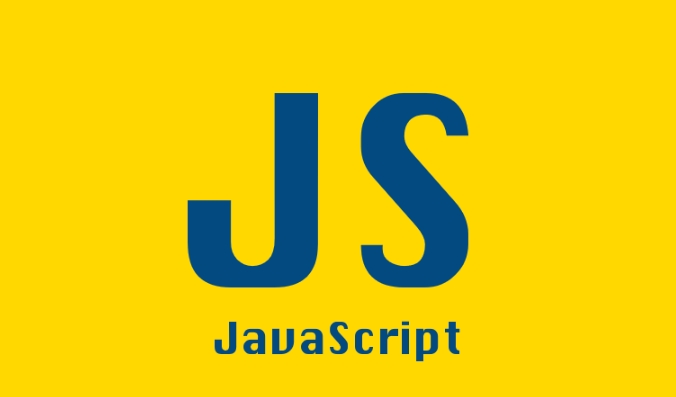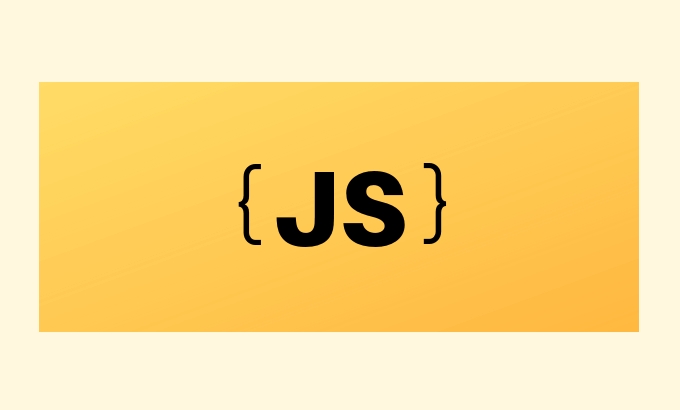JavaScript's class syntax supports object-oriented programming with a clearer structure. 1. Use the class keyword to define the class, and use constructor() to constructor(). The method is written directly in the class without function. 2. Inheritance is implemented through extends. The subclass must call super() to initialize the parent class. 3. Static methods are defined with static, and private fields are declared to be accessed within the class with #. 4. Classes are not promoted, methods cannot be enumerated by default, and getters and setters are supported.

JavaScript's class syntax is a very basic part of modern front-end development, and it makes object-oriented programming more intuitive. Although JavaScript classes are essentially based on prototype implementations, class provides a clearer and closer to the traditional OOP language writing.

How to define a class?
In JavaScript, use the class keyword to define a class. The basic structure is as follows:
class Person {
constructor(name) {
this.name = name;
}
sayHello() {
console.log(`Hello, I'm ${this.name}`);
}
}-
constructor()is a constructor that is automatically called when creating an instance withnew. - The method is written directly in the class without adding
functionkeyword. - There is no comma separation between methods in the class, otherwise an error will be reported.
You can also create an instance and call a method like this:

const person = new Person('Alice'); person.sayHello(); // Output: Hello, I'm Alice
Note: The class must be called through new and cannot be executed directly like ordinary functions, otherwise an error will occur.
How to implement inheritance of classes?
JavaScript classes support inheritance through extends , and subclasses can inherit the properties and methods of the parent class. For example, we have a Teacher class inherited from Person :

class Teacher extends Person {
constructor(name, subject) {
super(name); // Super must be called to initialize the constructor of the parent class this.subject = subject;
}
teach() {
console.log(`${this.name} teaches ${this.subject}`);
}
}Key points:
- Use
extendsto specify the inherited parent class. -
super()must be called inconstructorof the subclass, otherwise an error will be reported. - The parameters passed in
super()should correspond to the requirements of the parent class constructor.
Call method:
const teacher = new Teacher('Bob', 'Math'); teacher.sayHello(); // Hello, I'm Bob teacher.teach(); // Bob teachers Math
How to use static methods and private fields?
Static methods belong to the class itself, not the instance of the class. You can define them with the static keyword:
class Utils {
static formatName(name) {
return name.toUpperCase();
}
}
console.log(Utils.formatName('alice')); // ALICE Private fields are declared with # prefix and can only be accessed inside the class:
class BankAccount {
#balance = 0;
deposit(amount) {
this.#balance = amount;
}
getBalance() {
return this.#balance;
}
}
const account = new BankAccount();
account.deposit(100);
console.log(account.getBalance()); // 100
console.log(account.#balance); // Error: SyntaxErrorThese features help you better encapsulate data and logic.
Class Notes and Frequently Asked Questions
- Classes will not be hoisted : Unlike functions, class declarations will not be hoisted to the top of the scope and must be defined before use.
- Class expressions can also be named or anonymous :
const Animal = class {}; - Methods in classes cannot be enumerated by default : they can be enumerated through
for...inlike methods of ordinary objects. - getter and setter support :
getandsetcan be used in the class to define the accessor for attributes.
Basically that's it. Once you master these basics, you will be more comfortable with handling component state, logical reuse, etc. when using React, Vue or other frameworks.
The above is the detailed content of JavaScript Classes: Syntax and Inheritance. For more information, please follow other related articles on the PHP Chinese website!

Hot AI Tools

Undress AI Tool
Undress images for free

Undresser.AI Undress
AI-powered app for creating realistic nude photos

AI Clothes Remover
Online AI tool for removing clothes from photos.

Clothoff.io
AI clothes remover

Video Face Swap
Swap faces in any video effortlessly with our completely free AI face swap tool!

Hot Article

Hot Tools

Notepad++7.3.1
Easy-to-use and free code editor

SublimeText3 Chinese version
Chinese version, very easy to use

Zend Studio 13.0.1
Powerful PHP integrated development environment

Dreamweaver CS6
Visual web development tools

SublimeText3 Mac version
God-level code editing software (SublimeText3)

Hot Topics
 How does garbage collection work in JavaScript?
Jul 04, 2025 am 12:42 AM
How does garbage collection work in JavaScript?
Jul 04, 2025 am 12:42 AM
JavaScript's garbage collection mechanism automatically manages memory through a tag-clearing algorithm to reduce the risk of memory leakage. The engine traverses and marks the active object from the root object, and unmarked is treated as garbage and cleared. For example, when the object is no longer referenced (such as setting the variable to null), it will be released in the next round of recycling. Common causes of memory leaks include: ① Uncleared timers or event listeners; ② References to external variables in closures; ③ Global variables continue to hold a large amount of data. The V8 engine optimizes recycling efficiency through strategies such as generational recycling, incremental marking, parallel/concurrent recycling, and reduces the main thread blocking time. During development, unnecessary global references should be avoided and object associations should be promptly decorated to improve performance and stability.
 How to make an HTTP request in Node.js?
Jul 13, 2025 am 02:18 AM
How to make an HTTP request in Node.js?
Jul 13, 2025 am 02:18 AM
There are three common ways to initiate HTTP requests in Node.js: use built-in modules, axios, and node-fetch. 1. Use the built-in http/https module without dependencies, which is suitable for basic scenarios, but requires manual processing of data stitching and error monitoring, such as using https.get() to obtain data or send POST requests through .write(); 2.axios is a third-party library based on Promise. It has concise syntax and powerful functions, supports async/await, automatic JSON conversion, interceptor, etc. It is recommended to simplify asynchronous request operations; 3.node-fetch provides a style similar to browser fetch, based on Promise and simple syntax
 JavaScript Data Types: Primitive vs Reference
Jul 13, 2025 am 02:43 AM
JavaScript Data Types: Primitive vs Reference
Jul 13, 2025 am 02:43 AM
JavaScript data types are divided into primitive types and reference types. Primitive types include string, number, boolean, null, undefined, and symbol. The values are immutable and copies are copied when assigning values, so they do not affect each other; reference types such as objects, arrays and functions store memory addresses, and variables pointing to the same object will affect each other. Typeof and instanceof can be used to determine types, but pay attention to the historical issues of typeofnull. Understanding these two types of differences can help write more stable and reliable code.
 JavaScript time object, someone builds an eactexe, faster website on Google Chrome, etc.
Jul 08, 2025 pm 02:27 PM
JavaScript time object, someone builds an eactexe, faster website on Google Chrome, etc.
Jul 08, 2025 pm 02:27 PM
Hello, JavaScript developers! Welcome to this week's JavaScript news! This week we will focus on: Oracle's trademark dispute with Deno, new JavaScript time objects are supported by browsers, Google Chrome updates, and some powerful developer tools. Let's get started! Oracle's trademark dispute with Deno Oracle's attempt to register a "JavaScript" trademark has caused controversy. Ryan Dahl, the creator of Node.js and Deno, has filed a petition to cancel the trademark, and he believes that JavaScript is an open standard and should not be used by Oracle
 React vs Angular vs Vue: which js framework is best?
Jul 05, 2025 am 02:24 AM
React vs Angular vs Vue: which js framework is best?
Jul 05, 2025 am 02:24 AM
Which JavaScript framework is the best choice? The answer is to choose the most suitable one according to your needs. 1.React is flexible and free, suitable for medium and large projects that require high customization and team architecture capabilities; 2. Angular provides complete solutions, suitable for enterprise-level applications and long-term maintenance; 3. Vue is easy to use, suitable for small and medium-sized projects or rapid development. In addition, whether there is an existing technology stack, team size, project life cycle and whether SSR is needed are also important factors in choosing a framework. In short, there is no absolutely the best framework, the best choice is the one that suits your needs.
 Understanding Immediately Invoked Function Expressions (IIFE) in JavaScript
Jul 04, 2025 am 02:42 AM
Understanding Immediately Invoked Function Expressions (IIFE) in JavaScript
Jul 04, 2025 am 02:42 AM
IIFE (ImmediatelyInvokedFunctionExpression) is a function expression executed immediately after definition, used to isolate variables and avoid contaminating global scope. It is called by wrapping the function in parentheses to make it an expression and a pair of brackets immediately followed by it, such as (function(){/code/})();. Its core uses include: 1. Avoid variable conflicts and prevent duplication of naming between multiple scripts; 2. Create a private scope to make the internal variables invisible; 3. Modular code to facilitate initialization without exposing too many variables. Common writing methods include versions passed with parameters and versions of ES6 arrow function, but note that expressions and ties must be used.
 What is the cache API and how is it used with Service Workers?
Jul 08, 2025 am 02:43 AM
What is the cache API and how is it used with Service Workers?
Jul 08, 2025 am 02:43 AM
CacheAPI is a tool provided by the browser to cache network requests, which is often used in conjunction with ServiceWorker to improve website performance and offline experience. 1. It allows developers to manually store resources such as scripts, style sheets, pictures, etc.; 2. It can match cache responses according to requests; 3. It supports deleting specific caches or clearing the entire cache; 4. It can implement cache priority or network priority strategies through ServiceWorker listening to fetch events; 5. It is often used for offline support, speed up repeated access speed, preloading key resources and background update content; 6. When using it, you need to pay attention to cache version control, storage restrictions and the difference from HTTP caching mechanism.
 Handling Promises: Chaining, Error Handling, and Promise Combinators in JavaScript
Jul 08, 2025 am 02:40 AM
Handling Promises: Chaining, Error Handling, and Promise Combinators in JavaScript
Jul 08, 2025 am 02:40 AM
Promise is the core mechanism for handling asynchronous operations in JavaScript. Understanding chain calls, error handling and combiners is the key to mastering their applications. 1. The chain call returns a new Promise through .then() to realize asynchronous process concatenation. Each .then() receives the previous result and can return a value or a Promise; 2. Error handling should use .catch() to catch exceptions to avoid silent failures, and can return the default value in catch to continue the process; 3. Combinators such as Promise.all() (successfully successful only after all success), Promise.race() (the first completion is returned) and Promise.allSettled() (waiting for all completions)






